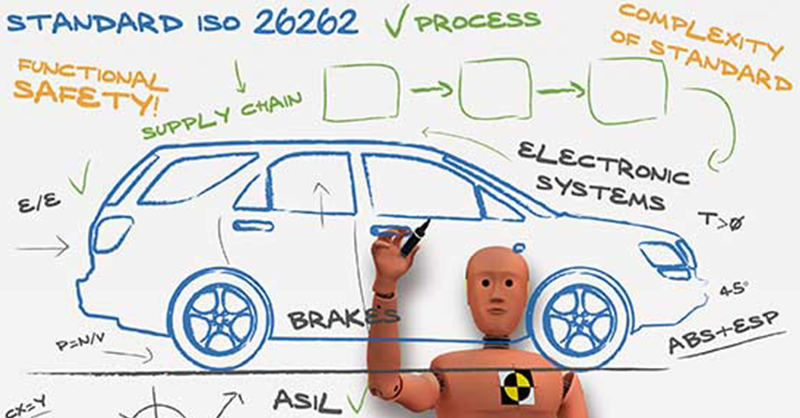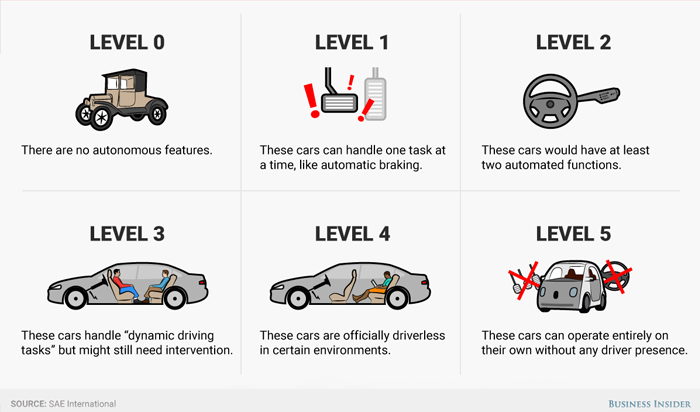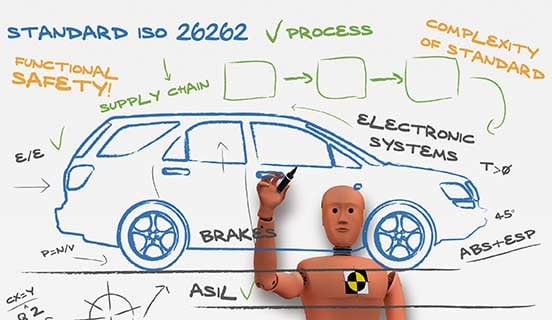Why is Safety at the Core of Software-Defined Vehicles?
Why is Safety at the Core of Software-Defined Vehicles? Creating technology can be a complicated and time-consuming process. At LHP Engineering...
Unlock Engineering Insights: Explore Our Technical Articles Now!
Discover a Wealth of Knowledge – Browse Our eBooks, Whitepapers, and More!
Stay Informed and Inspired – View Our Webinars and Videos Today!
2 min read
 Megan Verkamp
:
Feb 16, 2018 7:02:00 PM
Megan Verkamp
:
Feb 16, 2018 7:02:00 PM

Just as in Aerospace, the International Standards Organization has created the functional safety standard, ISO 26262, for the automotive industry. Automotive functional safety is the part of the overall safety of a system or piece of equipment that depends on the system or equipment operating correctly in response to it inputs, including the safe management of likely operator errors, hardware failures, and environmental changes.
Per industry experts, the automotive industry is projecting fully autonomous (Level 5) cars by 2021. While the idea of full autonomy seems to be ever more present, a survey from AAA found 75% of U.S. drivers are afraid of relinquishing total control of a 2-ton vehicle to coding. For the average consumer, safety is a top contributing factor when deciding to purchase a new vehicle. With the autonomous trend becoming more of a reality by the minute, OEM’s, suppliers, and government bodies are going to have to band together to ensure consumer safety is on top of mind.
 Source: Business Insider "This is what the evolution of self-driving cars looks like"
Source: Business Insider "This is what the evolution of self-driving cars looks like"
ISO 26262 Facts and Tips
While ISO 26262 seems to be a well-known industry topic, there are still questions surrounding the process and how it is used.
LHP’s functional safety experts weigh in on tips and facts surrounding the ISO 26262 standard
1. ISO 26262 has 8 parts beginning with overall safety management, systems management hardware management, software management, Production & operations, and then supporting processes.
Get started on the road to ISO 26262 Compliance
2. ISO 26262 now expands to include ALL road vehicles including; RVs, tractor trailers, busses, and utility vehicles.
Read about the latest standard
3. ISO 26262 governance can be effective in any organization- start-ups, suppliers, and OEMs.
4. ISO 26262 processes must be planned and integrated with quality management processes.
5. The ISO 26262 safety lifecycle encompasses activities during the concept phase, product development, production, operation, service and decommissioning.
6. You can self-certify for ISO 26262, as well as be certified by governing bodies.
Become ISO 26262 Certified today
7. The ISO committee is attempting to address autonomous driving in the next revision of ISO 26262
8. LHP designed its first safety critical system over a decade before ISO 26262 was released
9. Being ISO 26262 ready will give you the competitive edge over suppliers who are not ready
Stay ahead of competitors- kick-start your pathway to compliance
10. Did you know- one or more functional safety audits are to be performed by your customer? A functional safety audit evaluates the implementation of the processes required for the functional safety activities.

LHP takes a bottom-up approach. We will do the work for you to ensure you’re interpreting and implementing the required safety standards correctly. Our goal is to help you navigate the current compliance requirements in a way that positions you for success today and in years to come.

Why is Safety at the Core of Software-Defined Vehicles? Creating technology can be a complicated and time-consuming process. At LHP Engineering...

LHP’s Safety Supervisor Software for Smart Vehicle Platforms Introduction As the automotive industry accelerates toward smart vehicle architectures,...